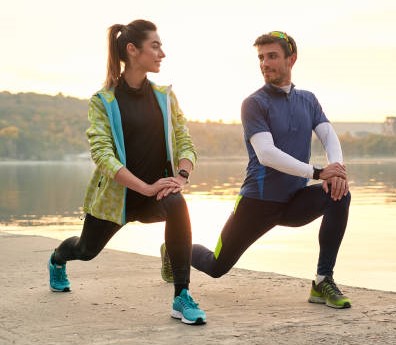Running is an incredible way to stay fit, clear your mind, and connect with your body. But let’s be real—running without stretching is like trying to bake without preheating the oven. It just doesn’t work as well. Today, let’s sit down and chat about why stretches before and after running are your best friends. Grab a cup of water (hydration is key), and let’s dive into the details.
Why Stretching Before a Run is Essential
Before you hit the trail or pavement, your muscles need to wake up. Think of it like starting your car on a frosty morning. You don’t just jump in and speed off. Instead, you let the engine warm up. That’s exactly what dynamic stretches do for your body.
Dynamic stretches are active movements that get your blood flowing and your muscles ready for action. They’re like sending a friendly “Hey, we’re about to run!” message to your body. Here are some of my favorites:
- Leg Swings: Hold onto a wall or post, swing one leg forward and back, then switch. Loosens up your hips beautifully.
- High Knees: Jog in place while lifting your knees high—this gets your heart rate up and your legs ready.
- Walking Lunges: A simple but powerful move to prepare your quads and glutes.
Spend about 5-7 minutes on these, and you’ll notice how much smoother your run feels.
Stretching After Your Run: Cooling Down Like a Pro
Now, you’ve finished your run. Maybe it was a quick jog around the block, or perhaps you tackled a challenging 10K. Either way, your muscles worked hard, and they’re begging for a little TLC. Enter static stretches.
Static stretches are all about holding a position to lengthen the muscles you just used. These stretches help prevent soreness and improve your flexibility over time. Let me walk you through a few must-do moves:
- Hamstring Stretch: Sit on the ground, extend one leg out, and gently reach for your toes. Your hamstrings will thank you.
- Quad Stretch: Stand tall, grab your ankle, and pull it gently towards your glutes. Hold onto a wall for balance if needed.
- Calf Stretch: Place your hands on a wall, step one foot back, and press the heel into the ground. Switch sides.
- Hip Flexor Stretch: Kneel on one knee, lean forward slightly, and feel that glorious stretch in your hip area.
Hold each stretch for 20-30 seconds, and don’t rush—this is your time to recover.
- Can I skip stretching if I’m short on time?
Life is busy! But even a quick 5-minute stretch can make a world of difference. Prioritize dynamic stretches before and at least one or two key static stretches after. - What if I feel stiff even after stretching?
That’s normal, especially if you’re new to running or stretching. Consistency is key. Over time, your muscles will become more flexible and resilient.
A Balanced Routine is Everything
Stretching isn’t just an add-on; it’s an essential part of your running routine. It keeps you limber, reduces your risk of injuries, and makes running feel more enjoyable. Plus, it’s a great moment to connect with your body and reflect on your progress.
The next time you lace up, remember: your stretches are as important as your shoes. Treat your body well, and it will reward you with stronger, happier runs.
Final Thoughts
Whether you’re a seasoned marathoner or someone just starting their running journey, stretching can transform how you feel during and after your runs. Think of it as the bridge between effort and recovery—a little time invested now saves you from discomfort later.
So, what’s your plan for your next run? Will you try adding a few of these stretches? I’d love to hear how they work for you. Here’s to many strong strides and a body that feels its best, every step of the way

